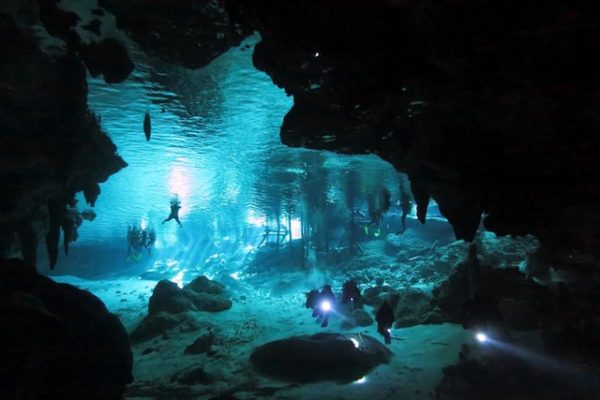Recent investigations in the caves of Sac Actun revealed a ritual pilgrimage center and possible link between the prehistoric inhabitants of the area with the Mayan cosmology”, reported archaeologist Guillermo de Anda.
De Anda, director of the Great Maya Aquifer (GAM), research project of the National Institute of Anthropology and History (INAH) of Mexico, explained during a press conference that the site covers 248 cenotes, entrances to the submerged caves, and 198 archaeological objects have been found .
Of these, 138 contexts are Mayan and the others belong to the preceramic period, which extends from the arrival of the first inhabitants from Asia more than 10,000 years ago until approximately 4,000 years ago.
As for the Mayan vestiges, he pointed out that walls, passages and altars have been discovered, possibly dating from times prior to the occupation of the area by this culture. It also highlights a funerary context of Mayan origin, as evidenced by the presence of human remains and an associated ceramic offering.
There are also fragments of a censer that apparently has the representation of the Mayan god of commerce, Ek Chuak, part of an offering linked to a Mayan structure of the Postclassic period (900-1200 AD).
He pointed out that this cave system is very close to the Caribbean coast, which during the Postclassic era was part of the navigation routes of Mayan merchants.
“This was a point of entry into the interior lands, they had to follow well-established land routes, one hypothesis is that the merchants would have this as a point of ritual pilgrimage, and on their way inland, they would have to make stops at altars buily and in strategic sacred places” he said.
On the other hand, in several sites located in Sac Actun human bone fragments that could belong to individuals who roamed the Peninsula thousands of years ago, can be observed.
“The presence of preceramic individuals speaks of a constant interaction in this area for ten or 15 thousand years, or maybe even more” he said.
The specialist pointed out that one of the objectives of the project of the Great Maya Aquifer, of which Sac Actun is a part, “is to determine if the origin of the Mayan worldview can be as old as to have been inherited by a preceramic culture, that I personally I think it’s a great possibility,” the expert said.
“According to the Maya, the creation of the world took place in the caves, so it can be an ancient oral tradition inherited from that time” he said.
The sub director of Underwater Archeology of the INAH, Roberto Junco, announced that it will seek to promote the declaration of the Sac Actun system as Mixed Good before the United Nations Educational, Scientific and Cultural Organization (Unesco) , for having a natural component but also a cultural one of universal value.
Last January, explorers of the Great Aquifer project revealed that Sac Actun, in the Yucatan Peninsula, was identified as the world’s largest 347-kilometer-long flooded cave system.
The historic discovery was recorded when the connection of the two cave systems was found, these are known as Sac Actun (263 kilometers) and Dos Ojos (84 kilometers).
According to the rules of speleology, the largest cave absorbs the smallest, so the name of the latter disappears and in this way Sac Actun is officially the largest flooded cave in the world.
Source: huffingtonpost.com


